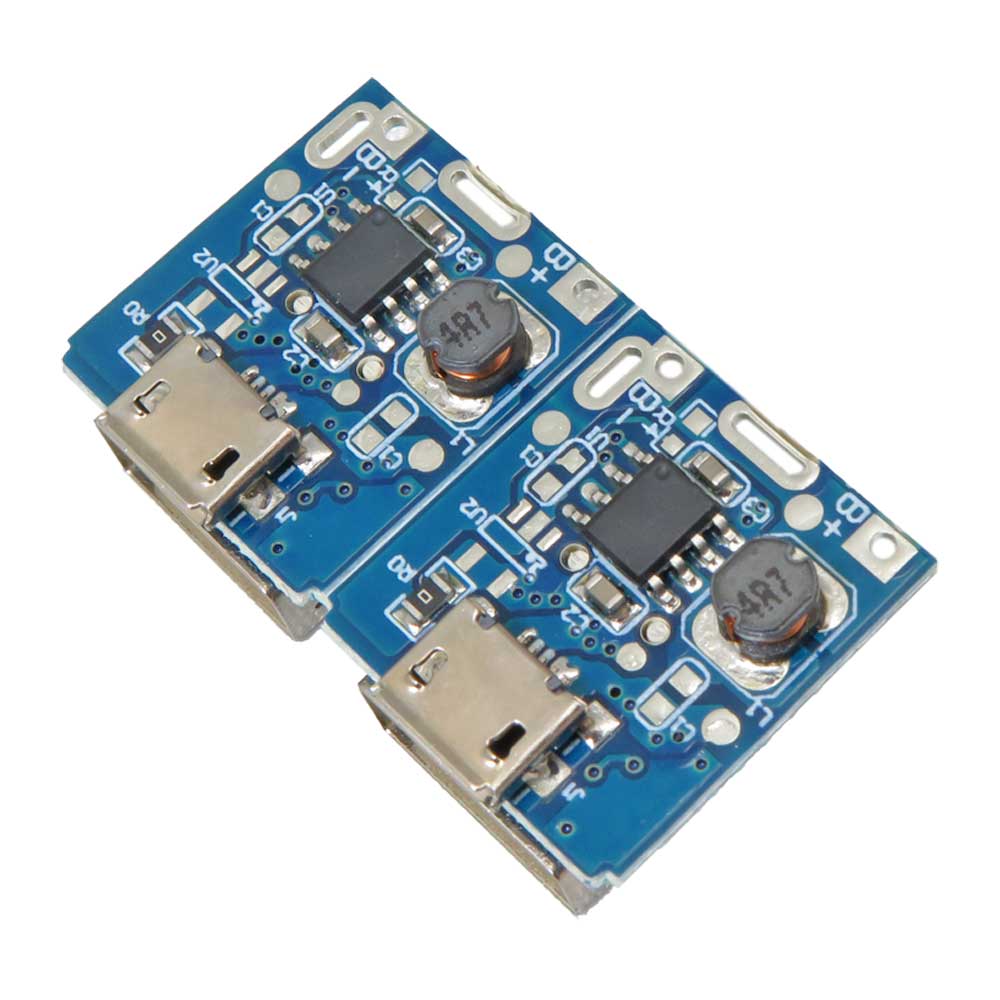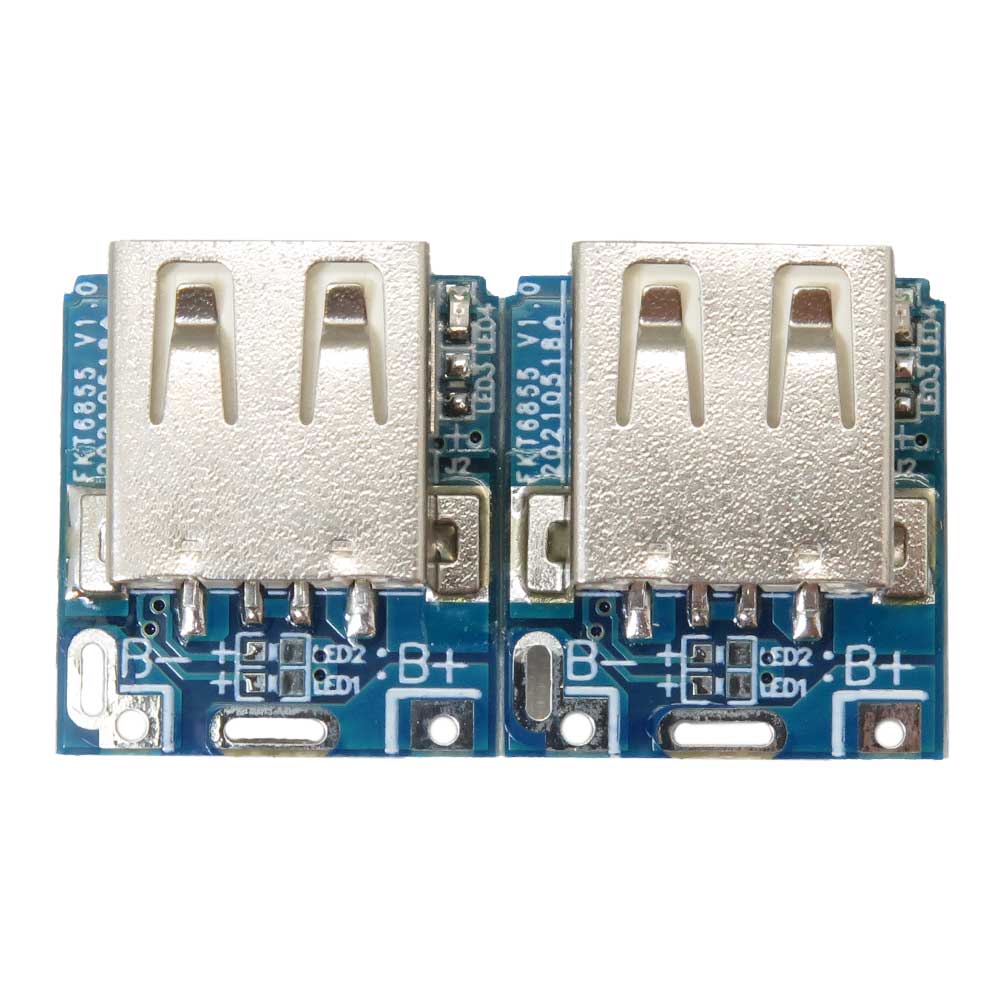58,170 تومان
کالا موجود استموجودی انبار : 104 عدد
علاقه مندان : 14 نفر
وضعیت : فعال
تعداد مرجوعی : 1
دنبال کنندگان : 20 نفر
قدمت : 8 سال و 6 ماه و 1 روز
وزن : 3 گرم
کل فروش : 1958 عدد
تعداد سفارش ها : 610 سفارش
3 از 5.0 با 9 رای
ماژول شارژر / دشارژر باتری لیتیومی SY3500 جهت ساخت پاور بانک
ماژول شارژر و دشارژر باتری لیتیومی 5 ولت 1 آمپر مخصوص شارژ یک باتری لیتیوم یون یا چند باتری لیتیوم یون به صورت موازی طراحی شده است و پورت شارژ آن می تواند انرژی مورد نیاز خود را از پورت USB دریافت کند. شارژ و دشارژ باتری ها یک واکنش شیمیایی است، اما باتری های لیتیوم یون به عنوان استثنا شناخته می شوند. دانشمندان باتری معتقدند جریان انرژی به داخل و خارج از باتری به دلیل حرکت یون ها بین آند و کاتد صورت می گیرد. این ادعا تا حدی درست است، اما اگر کاملاً صحیح بود، عمر باتری بی نهایت می شد.
کاهش ظرفیت باتری به دلیل گیر کردن یون ها در ساختار آن رخ می دهد، اما همانند سایر سیستم های باتری، خوردگی داخلی و دیگر اثرات تخریبی که به عنوان واکنش های جانبی بر الکترولیت و الکترودها شناخته می شوند نیز نقش مهمی ایفا می کنند. باتری های لیتیوم یون به طور ایمن در محدوده ولتاژ کاری تعیین شده عمل می کنند، اما اگر به اشتباه ولتاژ بیش از مقدار مشخص شده به باتری اعمال شود، پایداری آن به خطر می افتد. شارژ طولانی مدت بالاتر از 4.3 ولت برای سلول های طراحی شده برای 4.20 ولت باعث ایجاد لایه فلزی لیتیوم روی آند می شود.
مواد کاتد به یک عامل اکسید کننده تبدیل شده، پایداری خود را از دست می دهند و گاز دی اکسید کربن (CO2) تولید می کنند. فشار سلول افزایش می یابد و اگر شارژ ادامه پیدا کند، دستگاه قطع جریان (CID) که مسئول ایمنی سلول است در فشار 1,000 تا 1,380 kPa معادل 145 تا 200 psi عمل می کند و جریان را قطع می نماید. فرایند شارژ می تواند به صورت متناوب انجام شود و باتری های لیتیوم یون نیازی به شارژ اشباع همانند باتری های سرب اسید ندارند.
این ویژگی یک مزیت مهم برای ذخیره سازی انرژی تجدید پذیر مانند پنل های خورشیدی و توربین های بادی به شمار می رود، زیرا این منابع انرژی همیشه قادر به شارژ کامل باتری نیستند. همچنین، عدم نیاز به شارژ قطره ای باعث ساده تر شدن طراحی شارژر می شود. نیازی به شارژ متعادل کننده همانند باتری های سرب اسید برای باتری های لیتیوم یون وجود ندارد. از جمله ویژگی های فنی ماژول SY3500 می توان به ولتاژ ورودی 5 ولت با جریان 1 آمپر، ولتاژ خروجی 5 ولت، جریان شارژ بین 500 تا 800 میلی آمپر و جریان دشارژ 1 آمپر اشاره کرد.
این ماژول برای باتری های لیتیوم یون استوانه ای (سیلندری) با ظرفیت بالا طراحی شده است و دارای کنترل هوشمند برای جلوگیری از شارژ بیش از حد و دشارژ بیش از حد می باشد. علاوه بر این، مدار محافظ در برابر اتصال کوتاه نیز در آن تعبیه شده است. این ماژول شارژر باتری 18650 با کنترل هوشمند برای استفاده با باتری های 18650 با سر صاف و محدوده ولتاژ 3.2 تا 4.2 ولت مناسب است و عملکرد ایمن و پایدار را در طول چرخه های شارژ و دشارژ فراهم می کند.
این شارژر و دشارژر باتری لیتیوم یون 5 ولت از طراحی کارآمد و مدرن برخوردار است و به راحتی در پروژه های DIY و سیستم های انرژی تجدید پذیر قابل استفاده می باشد. همچنین، مدیریت جریان و ولتاژ هوشمند باعث افزایش طول عمر باتری و بهینه سازی عملکرد آن در شرایط مختلف می شود. استفاده از این ماژول در سیستم های کوچک و بزرگ انرژی، به شما امکان می دهد تا بدون نگرانی از شارژ بیش از حد یا دشارژ بیش از حد، باتری های خود را ایمن و سریع شارژ نمایید.
این دستگاه یک ماژول مدیریت شارژ و تخلیه باتری لیتیومی کامل است که نه تنها وظیفه شارژ و دشارژ را به خوبی انجام می دهد، بلکه با کنترل هوشمند و سیستم محافظتی، امنیت و پایداری باتری های شما را تضمین می کند. طراحی جمع و جور و کاربر پسند آن باعث می شود تا نصب و راه اندازی آن در انواع تجهیزات و پروژه ها ساده و سریع انجام شود.
کاربرد :
- شارژ و دشارژ ایمن باتری های لیتیوم یون 18650 در پروژه های الکترونیکی خانگی و صنعتی.
- استفاده در سیستم های ذخیره سازی انرژی خورشیدی و توربین بادی کوچک برای تأمین انرژی مداوم.
- تأمین انرژی برای چراغ های اضطراری و پاوربانک های خانگی با کنترل هوشمند شارژ و دشارژ.
- استفاده در ربات ها و تجهیزات الکترونیکی قابل حمل با باتری قابل شارژ.
- مدیریت باتری های لیتیوم یون در دستگاه های هوشمند و ابزارهای دیجیتال با کنترل ایمنی ولتاژ و جریان.
مشخصات فنی ماژول SY3500 :
- ولتاژ ورودی : 5 ولت با جریان 1 آمپر
- ولتاژ خروجی : 5 ولت
- جریان شارژ : بین 500 تا 800 میلی آمپر
- جریان دشارژ : 1 آمپر
- نوع باتری قابل استفاده : باتری لیتیوم یون استوانه ای (سیلندری) با ظرفیت بالا
- محدوده ولتاژ باتری های 18650 : 3.2 تا 4.2 ولت
- کنترل هوشمند برای جلوگیری از شارژ بیش از حد : دارد
- کنترل هوشمند برای جلوگیری از دشارژ بیش از حد : دارد
- مدار محافظ در برابر اتصال کوتاه : دارد
- پشتیبانی از شارژ یک باتری یا چند باتری به صورت موازی
- امکان دریافت انرژی از پورت USB برای شارژ باتری
- فرایند شارژ قابل انجام به صورت متناوب و بدون نیاز به شارژ اشباع
- مناسب برای سیستم های ذخیره سازی انرژی تجدید پذیر مانند پنل خورشیدی و توربین بادی
- بدون نیاز به شارژ متعادل کننده مشابه باتری های سرب اسید
- طراحی جمع و جور و قابل نصب در پروژه های خانگی و صنعتی
- محافظت در برابر افزایش فشار سلول بیش از 1,000 تا 1,380 کیلو پاسکال معادل 145 تا 200 پوند بر اینچ مربع
امکانات :
- کنترل هوشمند برای جلوگیری از شارژ و دشارژ بیش از حد باتری
- مدار محافظ در برابر اتصال کوتاه برای افزایش ایمنی و جلوگیری از آسیب به باتری
- پشتیبانی از شارژ یک باتری یا چند باتری به صورت موازی با دریافت انرژی از پورت USB
- قابلیت استفاده در سیستم های ذخیره سازی انرژی تجدید پذیر مانند پنل خورشیدی و توربین بادی
Features:
Input Voltage: 5V / 1AOutput Voltage: 5V
Charging Current: 500~800mA
Discharge Current: 1A
Batteries: High-capacity cylindrical lithium-ion battery
Intelligent control overcharge: Yes
Over discharge: Yes
Short circuit protection circuit: Yes
Use 18650 flat head battery voltage to 3.2-4.2V




